15 finest Vietnam destinations for each travel style
Looking for the best places to go in Vietnam is no more a problem. Our article reveals 15 most interesting spots that can fit any kind of traveler worldwide. 4000 years of culture and more than 3200 kilometers of land have been claimed, Vietnam, an S-shaped country located in the Eastern side of the Eurasia continent, has successfully marked its name on the Map of the planet Earth. Due to such huge stretching from the North to the South crossing various topographies, Vietnam holds in itself a collection of mountains, deltas, rivers, caves, lagoons, ocean, canals, hills.
Other than that, a diversity of climate condition and integration amongst numerous communities throughout the country has resulted in current Vietnam that you hear of daily on the Internet. That is the reason why picking where to go in Vietnam is not an easy task for many of you. The article below lists down 15 total destinations across Vietnam to showcase the best features of the country that please any kind of travelers out there.
1. Northern Vietnam
1.1. Halong Bay, Quang Ninh
Leading the chart of the best places to go in Vietnam should not be something else but the sensational Halong Bay. The UNESCO World Heritage Site added another sight to see in their list presenting the world’s most spellbinding karst seascape, Halong Bay even twice. One was in 1991 and the other one was in 1998.

Situated along the Gulf of Tonkin, there lies thousands of limestone islands scraped away by nature into breath-taking rock formations. It is highly recommended to spend an overnight tour to fully appreciate the iconic views this site has to offer.
Most tourists are simply captivated with cruising along the karsts while more adventurous souls can explore a number of mammoth caverns such as the Sung Sot Cave or witness the glamorous stalagmites and stalactites in the Dau Go Cave. Halong area covers 3 bays: Halong Bay, Lan Ha bay & Bai Tu Long Bay. Recommend to take the overnight cruise.
1.2. Cat Ba Archipelago, Hai Phong
In the Western part of Ha Long Bay lies Cat Ba Island, a quaint fishing village with forest-covered limestone peaks, charming valleys and coastal plains; is one of the largest extensive groups of islands in the Northeast of Vietnam.

Along with most of the islands being inaccessible housing pristine coral reefs, coastal mangrove swamps and dense evergreen forests; half of the Cat Ba island is officially declared a National Park as an effort to preserve its’ diverse ecosystem.
Fortunately, accommodations are available to tourists who wish to explore the vast nature and diverse wildlife of Cat Ba Island.
1.3. Sapa, Lao Cai
Moving a little further towards the Western side from Halong Bay is a mountainous town covered with temperate weather all year round, Sapa. The Tonkin Alps, a moniker dating back from the French colonial era, or modernly known as the Hoang Lien Mountains borders Vietnam’s most beautiful verdant rice fields in the town of Sapa.
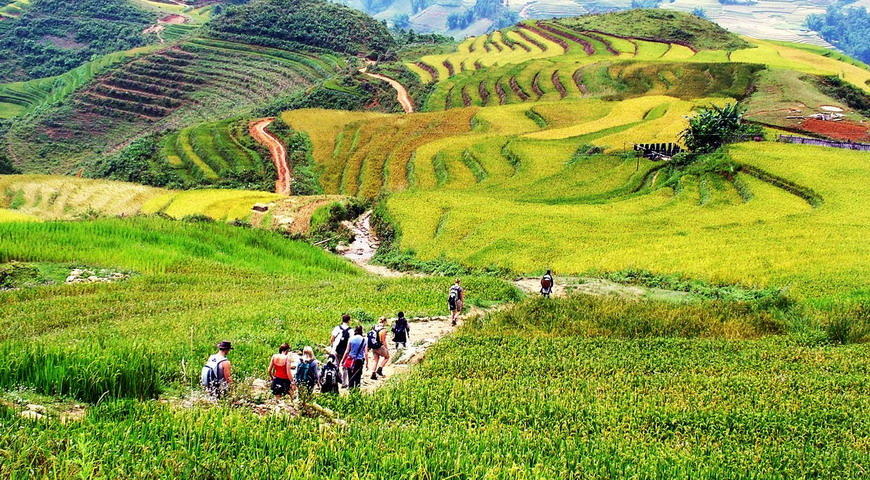
Fansipan – the country’s tallest peak, overlooks the rippling hills which are terraced with rice fields houses a diverse mix of ethnic minorities such as the Hmong, Giay, and Red Dzao people. Adventurers would surely be pleased by the number of trekking options along the tiny villages to witness the mountain’s glamorous views. Sapa with its’ old French hill station being the base of this location, continually grows as a tourist destination while being a complete opposite of the serene and tranquil scenery just right behind its’ doorstep.
1.4. Ninh Binh
If Ha Long Bay is the rocky limestone destination in the northern far seas, then Ninh Binh is would be the equivalent on the mainland. Located around 95km south of Hanoi, Ninh Binh and its’ neighboring area Tam Coc are filled with similar sights from the emerald green waters of Ha Long Bay.

Being the perfect place to start an adventure around Vietnam and Cambodia, Ninh Binh is a favored spot for tourists to post on social media, especially for its natural and untouched beauty.
In addition to the captivating natural features that Ninh Binh has to offer, the city is known to be the ancient capital of feudal Vietnam during the 11th century under the Dinh and the Early Le Dynasties. A two-day trip all around Ninh Binh would give you an ideal insight into how the ancient Vietnamese once ruled their country against the major outside force from China.
1.5. Hanoi
Born in the heart of the bountiful Red River Delta, the ever-bustling capital of Vietnam certainly captivates travelers with its unique picturesque charm and bewilders at the same time due to the motorbike frenzy, pollution or the persistence of street vendors. If immersion in the daily local Vietnamese life is what you seek, then Hanoi should definitely be the right place you can get.

The Hanoi Old Quarter has held in itself an excellent collection of museums for the history-inclined tourists, offering many beloved antiquities on display. Both the Vietnam Museum of Ethnology and Vietnam Fine Art Museum serves as primers in discovering the diverse artistry of the country, while the Ho Chi Minh Mausoleum proudly stands as an homage to the founder of modern Vietnam.
Above all, Hanoi local cuisine should not be forgotten. With just a four-hour food tour on the back of a motorbike, you will get to throw a feast like a real Hanoian with the finest culinary essence of the Gulf of Tonkin.
2. Central Vietnam
2.1. Phong Nha – Ke Bang National Park, Quang Binh
The first name ever to be called welcoming tourists to the Central land of Vietnam is Phong Nha – Ke Bang. This Vietnam’s UNESCO World Heritage Sites retains as one of the world’s best caving destinations.
With such a remarkable cave system and honeycombed formations, Paradise Cave houses marvelous stalactites and stalagmites running along its’ staggering length of 31km.
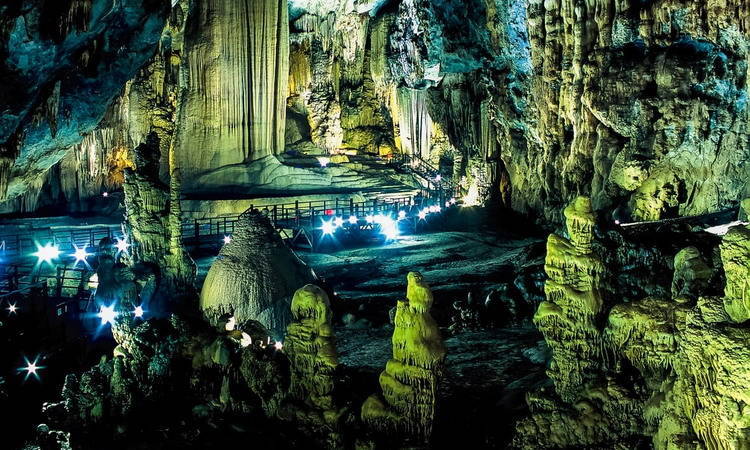
Other cavern formations are the Tu Lan Cave, a wet cave where travelers are expected to swim through the cave-river channels and the Phong Nha Caves are all accessible via Son Trach.
Yet, the one big thing that takes the reputation of Phong Nha – Ke Bang to a whole new level is Son Doong, the largest cave on Earth ever recorded.
2.2. Hue, Thua Thien Hue
Packed with heirlooms dating back from the reign of 19th-century Nguyen emperors, Hue is considered one of Vietnam’s most historic towns and the former imperial capital of the country. The emperor’s residence, palaces, and temples are some of the historic sites left standing inside walls of the Imperial Enclosure that spans for around 2.5km along the Perfume River.
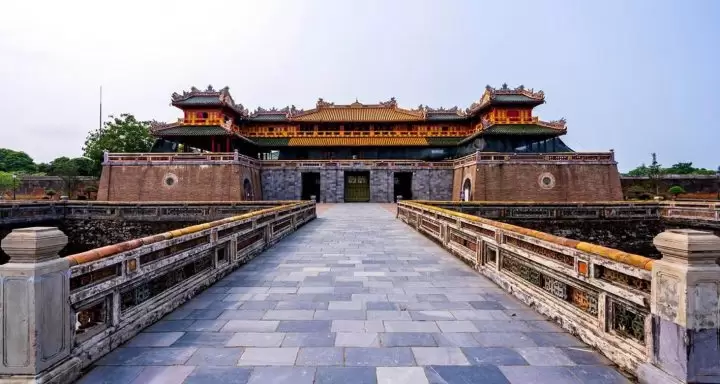
Other landmarks are the citadel’s main entrance, the Ngo Mon Gate, the Thai Hoa Palace with its intricate interiors, Dien Tho Residence which serves as the Queen Mothers’ chambers and lastly the Hall of Mandarins housing its’ well-preserved ceiling murals.
2.3. My Son, Quang Nam
Discovered by French archeologists in the late 19th century, My Son sanctuary is a cluster of abandoned and partially ruined temples used for centuries by the ancient kingdom of Champa for religious and political purposes.

Even though a majority of the architecture was destroyed during the bombing from the Vietnam-American War, the left-behinds are still transparent evidence of the once-mighty kingdom of a long-lost country.
This Heritage Site is commonly compared to the Angkor Wat of the Khmer kingdom but is uniquely identified with its’ architectural masterpiece of the Cham.
2.4. Hoian Old Quarter, Quang Nam
A well-preserved history surrounds the atmospheric city of Hoi An. This prominent trading center is considered by the Japanese and Chinese as the prime barter destination for silk in Southeast Asia back in the 15th century.
Tourists are attracted to see the surviving traditional architecture and crafts such as textile and ceramics. Some of the merchant’s lodgings have been opened for public viewing, and Tan Ky House definitely stands out for having fascinating architectural and decorative elements.
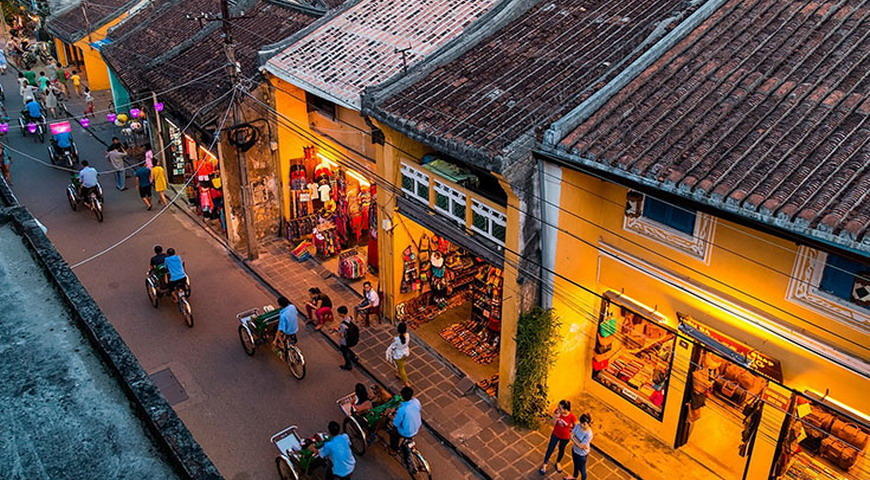
Hoi An’s most recognizable landmark is the Japanese Bridge, located by the western end of Tran Phu Street. There are several small pagodas and museums around the town but the Assembly Hall of the Fujian Chinese Congregation is regarded as the old town’s most highly decorated temple.
Witness the Hoi An’s true charm as you wander around its old town streets and well-preserved facades.
2.5. Da Nang
Boasting as one of the fastest developing cities in Vietnam, Da Nang has rightly modernized itself with a number of special bridges. Dragon Bridge and Han River Bridge are the most popular ones, connecting the two sides of this beautiful city.
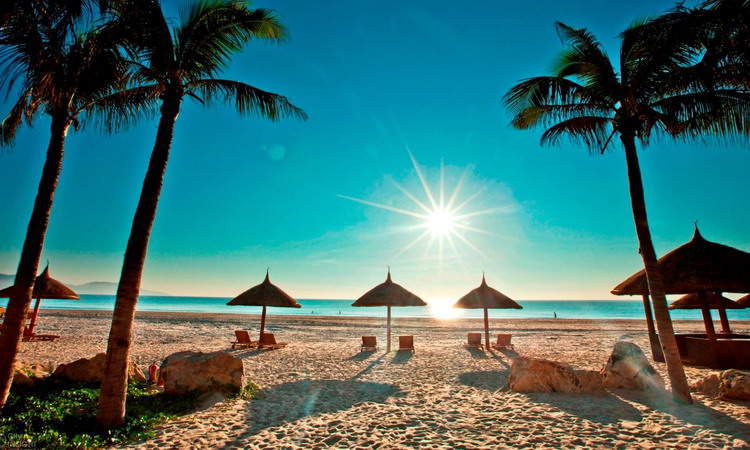
Other sights to see are the Marble Mountain which is seated right inside the city, the glorious beaches to the east and the Ba Na Hills to the west.
The tourism in this country is well-developed all thanks to the accessibility of Da Nang international airport which allows travelers to explore Central Vietnam.
2.6. Nha Trang
The beach city of Nha Trang is definitely one of the top summer destinations in Vietnam most due to its marvelous coastline. With numerous beach resorts, hotels, seafood restaurants, and beach bars, Nha Trang is the place to be for a well-deserved and relaxing vacation.

Nha Trang City- View from Spectrum of the sea
Another attraction to take note of are the several islands that surround the city. It’s just a boat ride away and corals are a sight to behold in the crystal clear waters below.
2.7. Dalat
Blessed with an all-year-round temperate climate, mist covering the entire valley and a multitude of lush pine trees, Da Lat is a slice of paradise in contrast to Vietnam’s otherwise tropical climate.

Once serving as the getaway of Vietnamese emperors and French colonials during the summer, this charming town situated in the South Central Highlands remains a popular destination for tourists alike.
An excursion by foot is the best way to enjoy the idyllic scenery and the French colonial architecture dotted along the picturesque landscape.
3. Southern Vietnam
3.1. Con Dao Archipelago, Ba Ria – Vung Tau
A land previously in turmoil under the French occupation, once a dwelling place to the most feared prison in Vietnam, Con Dao reflects an entirely different facade today.
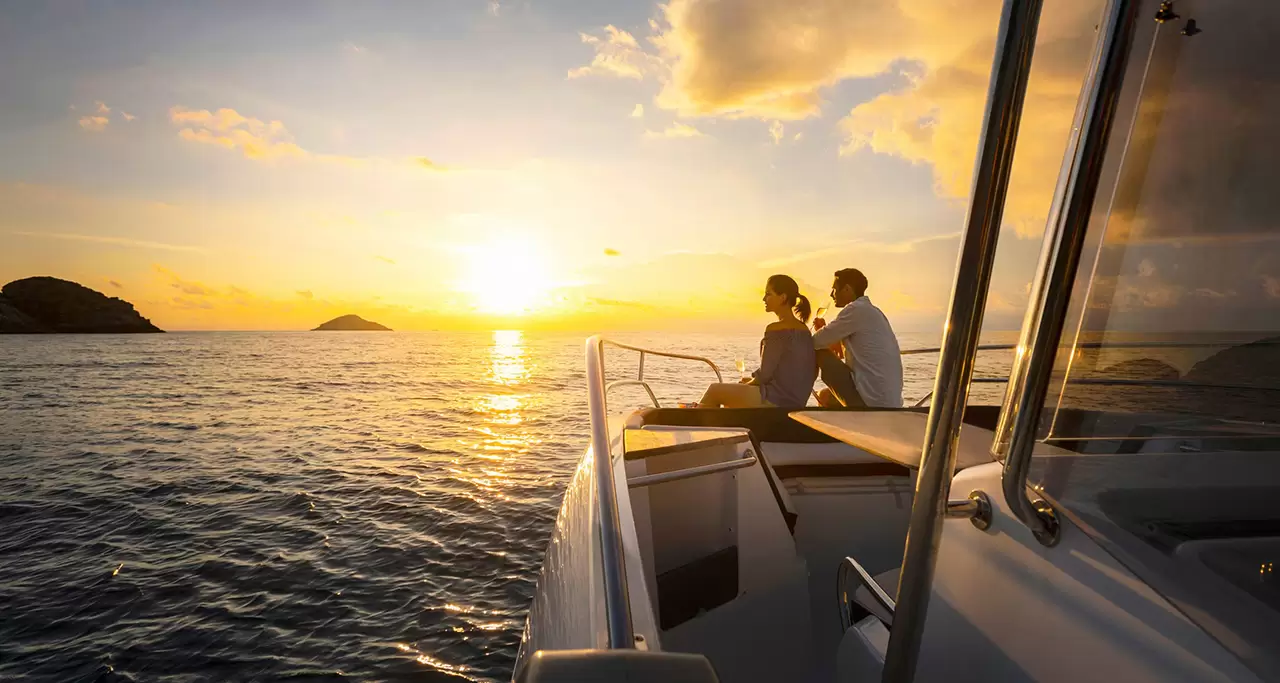
Opening its doors to tourism, Con Dao offers a laidback getaway with some of the most spectacular colonial architecture, gorgeous beaches, challenging hikes and a national park in the largest archipelago found in Con Son.
Are you ready to be mesmerized by the pristine sights and partake in fun activities like trekking in the National Park hanging out in Con Dao’s uncrowded beaches?
3.2. Ho Chi Minh City
It’s the digital nomads’ ultimate destination in Vietnam; Ho Chi Minh City (Ho Chi Minh) raises the standard offering amazing food and fast internet at low prices. Tours around District 1 will have most tourists busy with attractions influenced by the French-era architecture such as Vietnam’s own Notre Dame Cathedral, the War Remnants Museum, and Ben Thanh Market.

Let’s stop there for a while, amusement awaits along the neighboring districts like joining a tour on the Cu Chi Tunnels as it offers hindsight of what happened during the American War; Be enthralled with the dragon wrapped pillars of Cao Dai temples and listen to the tranquil hymns during the ceremonies and wander around the streets Bui Vien, the heart of the backpacker’s area before getting some dinner.
3.3. Mekong Delta
The gigantic Southernmost of this S-shaped country plays its role as a sub-region where the mighty Mekong River enters the East Sea through 9 river mouths. For hundreds of years, these river mouths have successfully formed up the bountiful Mekong wetland through an immense network of rivers and canals.

Because of such, the Mekong Delta is known to be the “holy land” of the rarest tropical fruits you have barely seen. The Delta houses the lush rice fields, mangrove and cajuput forests, mind-blowing handicraft villages reflecting the aqua-culture, floating markets, and spectacular cuisine.
Talking about what makes the culture of the Mekong Delta, our answer must be the harmonious fusion of the Vietnamese, Khmer and Chinese. Such amazing integration takes root in the 16th and 17th century when the Vietnamese fled towards the Central and Mekong Delta, where they met the native Khmer and then welcomed the Chinese refugees from mainland China.
For the past few centuries, these three big ethnicities have introduced a remarkable combination of delicacies, language, rituals, and customs. This is one of the biggest reasons why the Mekong Delta cannot be left behind in the list of the best places to visit in Vietnam.
With these 15 destinations above, there’s no worry to consider finding the best places to go in Vietnam. Are you a big foodie, history guru, nature lover or adventurous souls? Let’s skim through one of those once more and tell us which one you think is your best fit.


